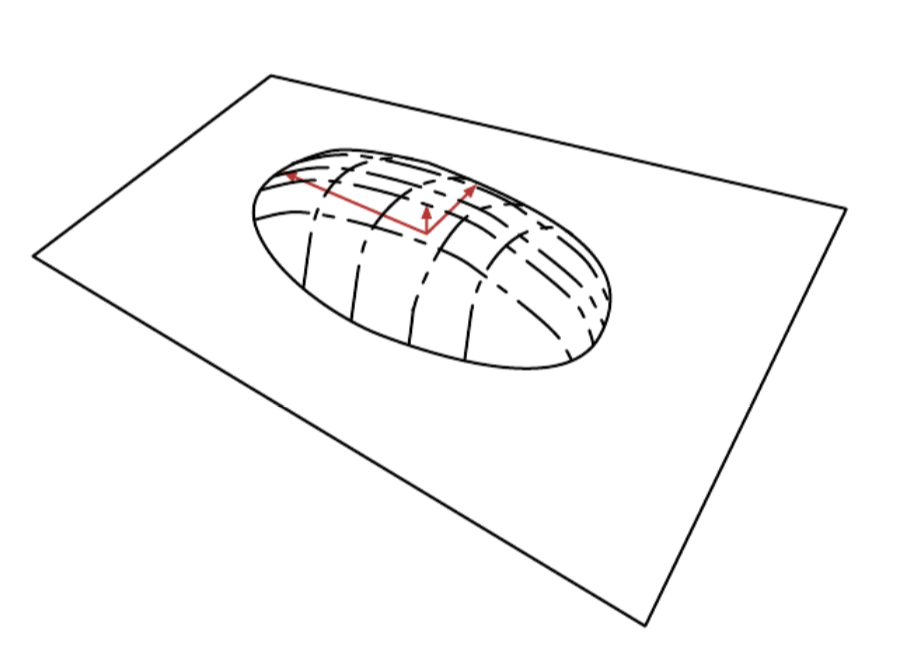Principal Component as a Manifold¶
We can view probabilistic PCA as defining a thin pancake shaped region of high probability.

This is interpretation is valid for any linear autoencoder that learns matrices W and V with the goal of making the reconstruction of \(x\) lie as close to \(x\) as possible.
The encoder is:
It computes an lower dimensional representation of \(h\). With the autoencoder we have also a decoder that reconstructs the input:
The choice of linear encoder and decoder is to minimize the reconstruction error:
With \(W=V, u,b = E[x]\) and \(W\) form an orthogonal basis, which spans the same subspace as the principal eigenvectors of the covariance matrix.
For PCA the columns W are the eigenvectors ordered by the magnitude of the corresponding eigenvalues. We can show that the eigenvalue of \(x_i\) of \(C\) correspond to the variance of X in the direction of eigenvector \(v^{(i)}\). If \(x \in R^D\) and \(h\in R\) with \(d < D\) then the optimal reconstruction error:
If the covariance has rand d, the eigenvalues \(\lambda_{d+1}\) to \(\lambda_D\) are 0 and the reconstruction error is \(0\).
The same solution can be obtained by maximizing the variance of the elements of \(h\), under orthogonal \(W\).
